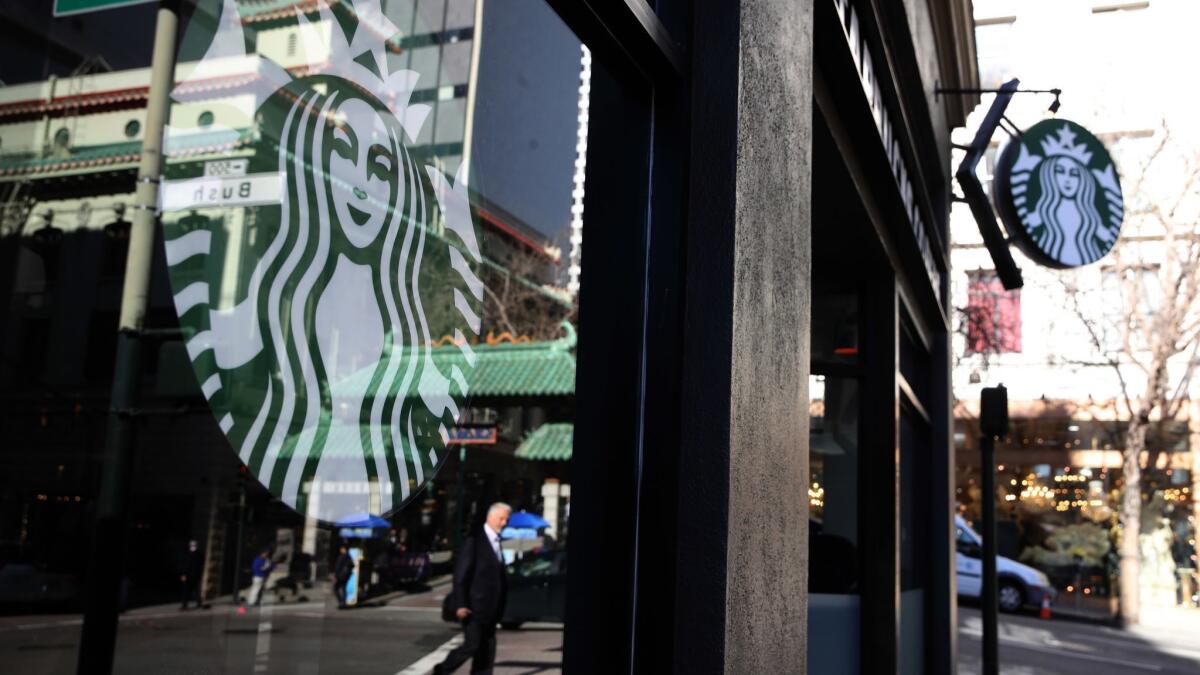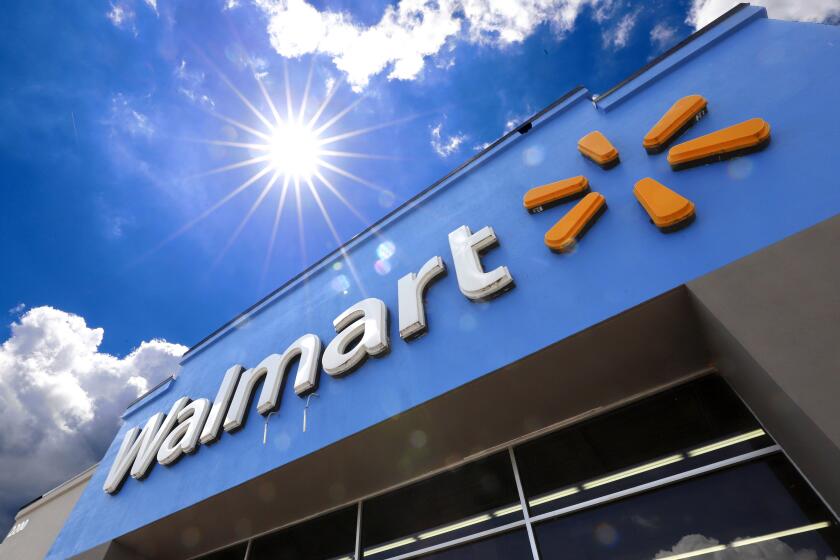Starbucks bathroom birth highlights challenges of welcoming all

- Share via
The young man walking back and forth from his seat to the packaged food section in the Starbucks store looked suspicious, recounted a store manager. In the past, she said, she might have asked him to leave.
Instead of confronting him, or calling the police, the manager talked to the man — who said he was hungry and homeless. She said she then gave him and a friend breakfast.
The anonymous incident was recounted in a much-anticipated report released Wednesday as Starbucks Corp. seeks to mend its reputation after a highly publicized confrontation in Philadelphia last April, when a store manager called police on two black patrons who later said they were waiting for a business meeting to start before ordering.
In response to the Philadelphia uproar, Starbucks now is training employees to treat anyone who walks in the door as a customer, whether they intend to make a purchase or not. The fresh take on Starbucks’ longtime goal of creating a “third space” — a public place for interaction and leisure away from home and work — offers a fresh set of challenges, employees said in the report prepared for the company by a law firm to measure progress on diversity and inclusion.
“In each of my listening sessions, partners shared how difficult it is to achieve this goal in communities that are deeply affected by addiction, mental illness or homelessness,” former U.S. Atty. Gen. Eric Holder, who assisted with the study, wrote in a letter included in the 67-page report from Covington & Burling. “These conversations highlighted a powerful tension between Starbucks’ efforts to create a welcoming third place on the one hand, and the realities of life in our most vulnerable communities on the other.”
Overall, the report found that Starbucks has improved already-robust diversity and inclusion policies since April. But it still has work to do to prevent an embarrassing repeat of what happened in Philadelphia — mostly related to training and staffing in vulnerable areas where homelessness or mental illness may be more prevalent.
With more than 14,000 Starbucks cafes in the U.S., there are lots of opportunities for incidents to arise with an open-door policy. One group of employees — which Starbucks calls partners — had to call for emergency medical aid after a woman gave birth in their store’s bathroom, Holder said in his summary, calling some of the stories of in-store experiences “stunning.” Other partners shared equally disturbing, if less dramatic, examples of having to navigate highly charged, or potentially violent, interactions.
“For some, the local Starbucks may be one of the only places where they can go to feel safe and warm, much less welcomed,” wrote Holder, a Covington partner.
Many of the tough issues facing Starbucks stores are also front and center for public libraries, said Amy VanScoy, who teaches library science at the University of Buffalo. Some are training staff to use Narcan, which can revive a person who overdoses on heroin. She offers a graduate-level course that helps librarians develop better cultural competency and identify their own biases.
“It’s not an easy situation for libraries, either; it’s definitely a challenge,” said VanScoy, who was a librarian before becoming an associate professor. “Customer service will only get you so far, and then it’s a matter of developing cultural competence. We’re lucky, we have a master’s-level education for people who are going to be librarians.”
Starbucks is putting together a task force to study the challenges and plans to work with community groups, advocacy organizations and other segments, including public libraries, with a similar need to accommodate a wide range of people, according to the report.
Still, some of the training will just be common sense, says Paul Gionfriddo, chief executive officer of Mental Health America, the 110-year-old mental health advocacy group. One in five Starbucks customers probably has a mental illness of some kind, he estimates, though few will display obvious or disruptive behaviors.
“People can change the comfort level simply by saying, ‘Hello,’ treating them calmly, presuming that people are not going to be violent,” said Gionfriddo, whose son has schizophrenia and has experienced homelessness.
Still, the very idea of a “third place” reflects the reality that most of its customers already have a first and second place, their home and job, said Susan Harmeling, associate professor of entrepreneurship at the USC Marshall School of Business and an expert in business ethics. Starbucks can’t afford to have people taking advantage of the free space, crowding out too many paying customers, she said.
“The 64-million-dollar question is, ‘Are they going to swing the pendulum so far in the other direction that that comes back to bite them somehow?’” Harmeling said.
In May, the coffee giant had to clarify that while anyone can sit in a Starbucks store or patio or use the bathroom without buying anything, certain behaviors such as smoking, drinking alcohol and sleeping still aren’t allowed. The chain said at the time that disruptive behavior includes unreasonable noise, improper use of restrooms and panhandling.
The coffee company has held six employee training sessions on how to treat people in its stores since May, Roz Brewer, Starbucks chief operating officer, said in an interview Thursday. The company also agreed to hire a new diversity and inclusion executive who will report back regularly to CEO Kevin Johnson and the board.
New guidelines included in the Covington report are meant to make it easier for an employee to determine what appropriate action is in different situations and physical spaces.
“We’re looking at this very holistically and then empowering the store managers to make great decisions around customers,” she said. “We feel like we face a lot of the same issues that other retailers face.”
More to Read
Inside the business of entertainment
The Wide Shot brings you news, analysis and insights on everything from streaming wars to production — and what it all means for the future.
You may occasionally receive promotional content from the Los Angeles Times.










